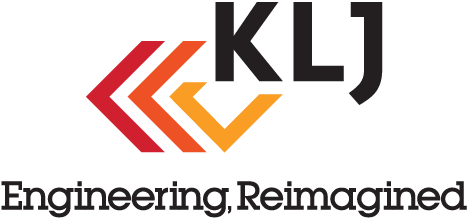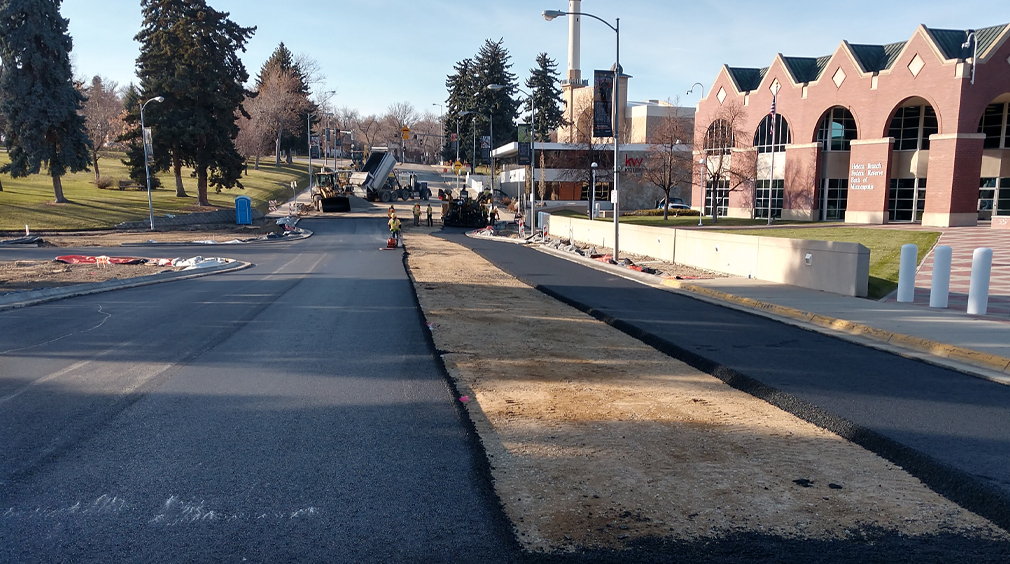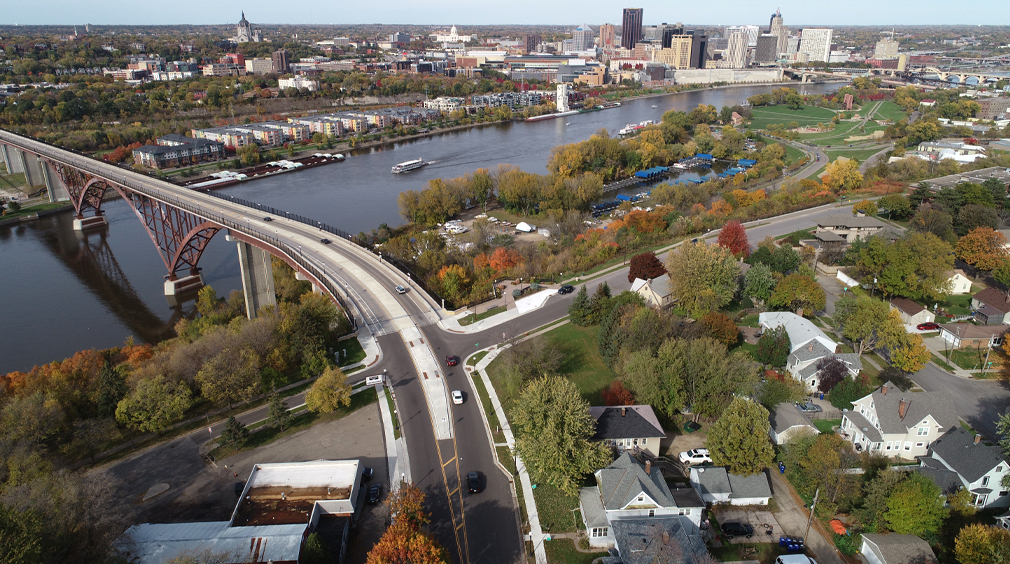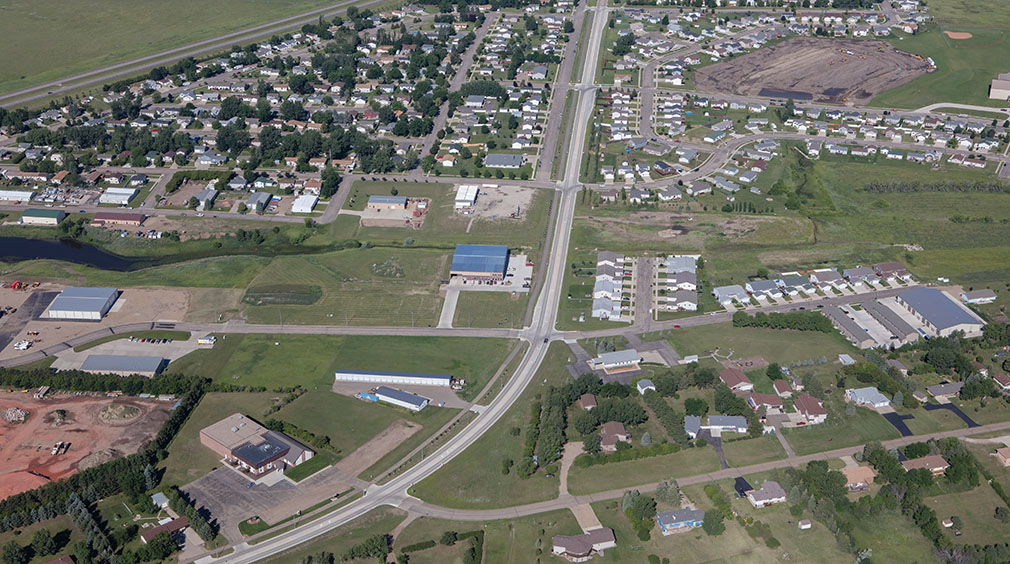PROJECT
Sheyenne Street is one of West Fargo’s main arterial roadways that begins in downtown West Fargo, crosses Interstate 94, and extends through the heart of West Fargo’s residential neighborhoods. It is just one of two north-south arterials in West Fargo that crosses I-94. During the peak hours, long queues blocked adjacent intersections and extended onto the interstate, creating challenging and serious safety issues. Additionally, auto traffic, combined with lack of multimodal facilities, created conflicts between pedestrians, bicyclists, and cars.
KLJ completed the corridor study for this project in 2015. Through a rigorous public and stakeholder involvement process and a responsive planning approach, KLJ and West Fargo developed the design, which combined the ramp sections into one intersection that could move directly into design and construction.
SOLUTION
After completing the successful corridor study, we were awarded the design and construction services contracts for the Sheyenne Street reconstruction project. The team developed a design that could better facilitate the flow of traffic while improving safety and maneuverability for all users along the corridor. Construction began in 2018 to completely reconstruct the 1.9-mile stretch of Sheyenne Street and the I-94 Interchange. The two-lane rural roadway was transformed into a six-lane urban corridor with new storm sewer, sanitary sewer, watermain, pedestrian facilities, and traffic signals.
KLJ survey crews provided the layout of concrete structures, subgrade and aggregate base grading, concrete roadway, sewer lines, watermains, sidewalks, lighting, signals, and the pedestrian underpass. Crews employed robotic total station, RTK GPS, and UAV to stakeout, collect, and document the construction process.
Moore Engineering provided the storm sewer design for the reconstructed corridor. Their design limits the size of the lower drainage area in the interchange, keeping the majority of the overall drainage area completely separate from the lower drainage area. The upper drainage area uses two dry detention ponds to reduce the size of downstream storm sewer pipes and pumps. The upper and lower drainage areas enter a single storm sewer lift station structure with two separate chambers that pump water into a common-force main and out to the Sheyenne River. The lower system was absent of any detention ponds, so a hydrodynamic separator was installed prior to the lift station.
Not only was the interchange geometry innovative and challenging to produce, but construction traffic control and interim drainage were also detailed designs. Every ramp of the existing interchange was fully reconstructed for at least half of the ramp length. In addition, two of the four interchange movements were realigned. Cast-in-place pedestrian underpass box culverts added to the complicated traffic control plan as well. In all, KLJ laid out several phases of traffic control to maintain all interchange movement, facilitate temporary drainage, and complete the construction. This plan also included temporary storm sewer and interchange ramp alignments.
Due to the booming development in West Fargo, most vacant property along the Sheyenne Street corridor and interchange had proposed development in the works. KLJ’s design staff, right-of-way staff, and surveyors worked with existing landowners, proposed developers, the City of West Fargo, and NDDOT to develop proposed acquisition lines, access management plans, and acquisition costs to help all parties visualize how the corridor would function adjacent to their property. Many parcels changed ownership multiple times throughout the design, which required weekly check-ins with landowners to get updates on pending sales or interested parties.
A Late bid date (4-13-18) made for a short turnaround time before construction had to begin in order to have a chance at meeting the completion requirements for winter suspension. Shop drawing and submittals, material fabrication and production, and delivery had to be expedited and accelerated.
Unseasonably cold and wet weather in the fall of 2018 and 2019 made completing an already challenging scope of work that needed to be accomplished, more challenging. A cold and late spring in 2019 delayed the start of work and compressed the schedule further.
Even with these challenges, contractors were able to work together to substantially complete the project on budget and on schedule.
KLJ maintained a high level of communication with the West Fargo Fire Department during the construction of Sheyenne Street to assure the safety of the workers, fire department, and community members. Prior to closing Sheyenne Street, KLJ held a meeting with the West Fargo Fire Department to discuss the construction and potential street closing. The thorough communication ensured a safe work environment for all parties involved.
Additionally, KLJ worked diligently to communicate and coordinate with the West Fargo Fire Department to assure that emergency vehicles were able to pass construction appropriately and timely from their fire station on 29th Avenue. When the fire department passed for emergency calls, KLJ’s flagging staff efficiently stopped and cleared traffic to allow the fire trucks to pass quickly and safely. This work was pivotal for the fire department to respond to emergencies in a reasonable amount of time and made a significant difference for those people in need of help. The West Fargo Fire Department passed through the construction zone multiple times during the summer and commended KLJ on their efforts towards safety and efficiency protocols.
KLJ incorporated refined growth projections into microsimulation models to evaluate operations and safety. The models allowed KLJ to address the unique travel challenges on Sheyenne Street. Travel patterns showed around 30 percent of daily traffic occurring during peak hours at a rate twice the statewide average for similar roadways. Additionally, around 75 percent of traffic travels in the peak direction, leading to a very high demand over short periods of the day.
To address these unique travel patterns, KLJ designed a Modified Single Point Urban Interchange design (MSPUI). Like a traditional Single Point Urban Interchange design, the MSPUI combines the ramp intersections into one intersection. However, the MSPUI allowed northbound traffic to travel without stopping through the interchange area. This design significantly reduced delays compared to the previous interchange configuration and reduces total crash potential by 60 percent. Combining the two interchange ramp intersections into one also increased spacing to the adjacent intersections, which helps meet traffic signal spacing requirements, improves flow across three densely-spaced intersections, and prevents queues from extending into adjacent intersections and back onto the interstate.
The storm sewer design at the interchange incorporates detention ponds in the upper system and the hydrodynamic separator in the lower system, thereby meeting the necessary water quality criteria established by the North Dakota Department of Environmental Quality for the City of West Fargo, which is a regulated Municipal Separate Storm Sewer (MS4) community. From discussions with North Dakota Department of Transportation staff, it appears this is the first interchange in North Dakota to have components incorporated into the storm sewer design to meet specific water quality criteria.
Throughout the project there were many aesthetic features that demanded attention to detail. The interchange bridges over Sheyenne Street consisted of formlined concrete surfaces throughout the structures that were stained to give the appearance of natural stone. This is the same for the pedestrian underpass at the southern end of the project. The contractor used self-consolidating concrete on the retaining walls of the underpass to allow the concrete to mold to the formliners and create a superior finish.
The underpass also included decorative concrete consisting of three colors in circular patterns. The contractor team completed the different colors without any issues.
All other quality control testing on the job was completed and met the requirements outlined in the contract.
Our design resulted in a 60 percent reduction in delay and reduced total crash potential by 60 percent. The improvements provide a multimodal corridor that stretches the entire north-south length of West Fargo, serving all users.
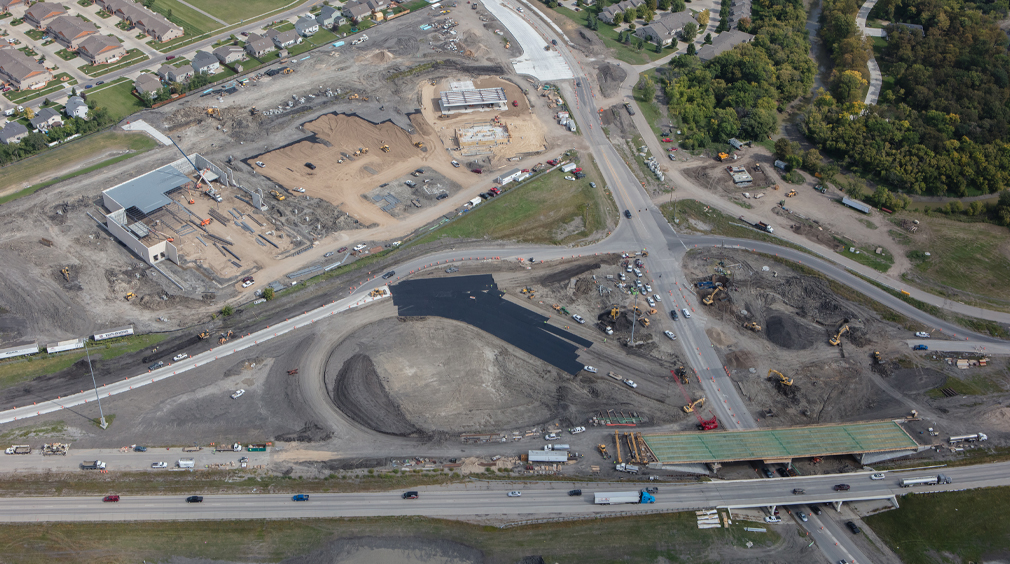

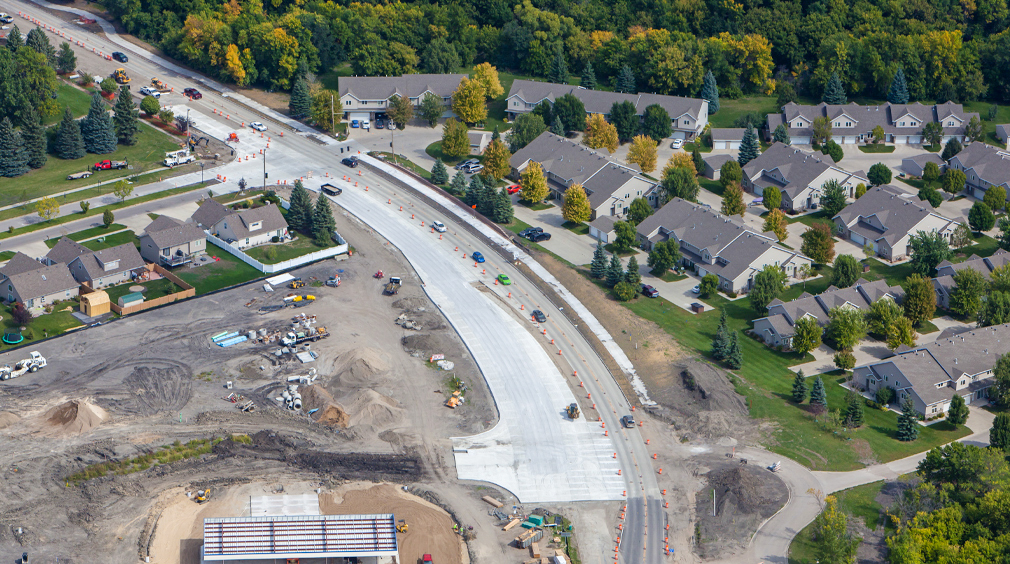
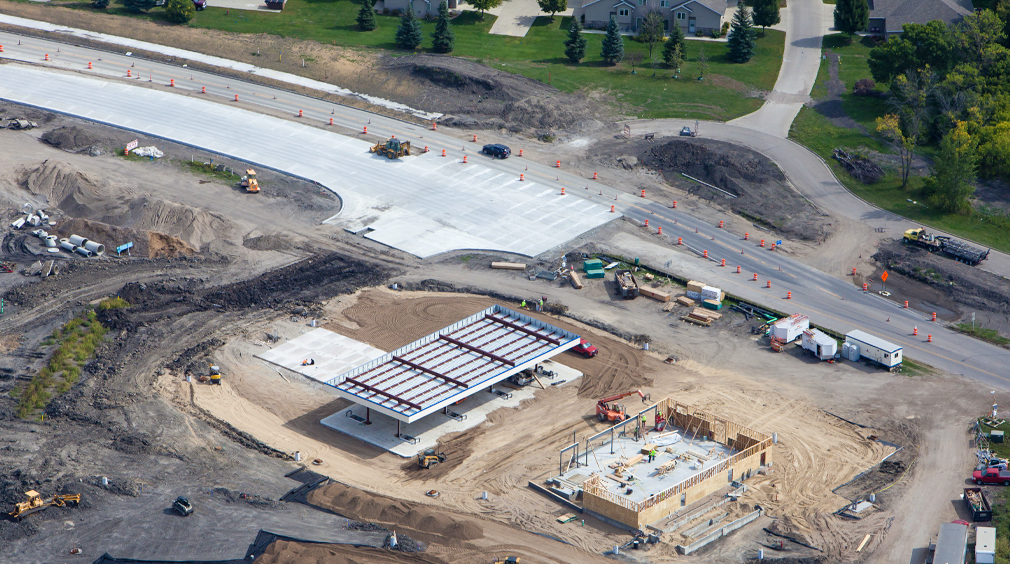
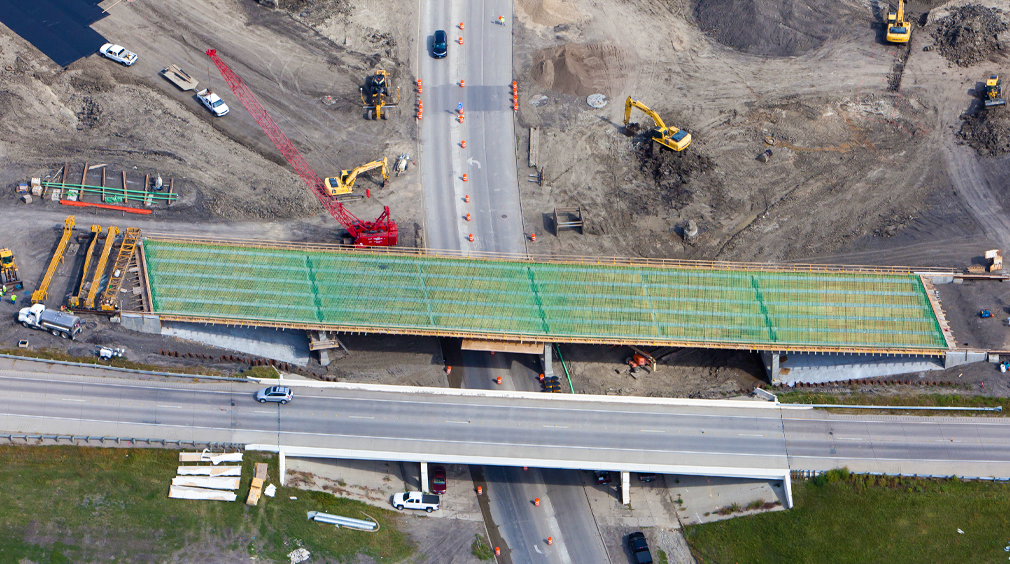
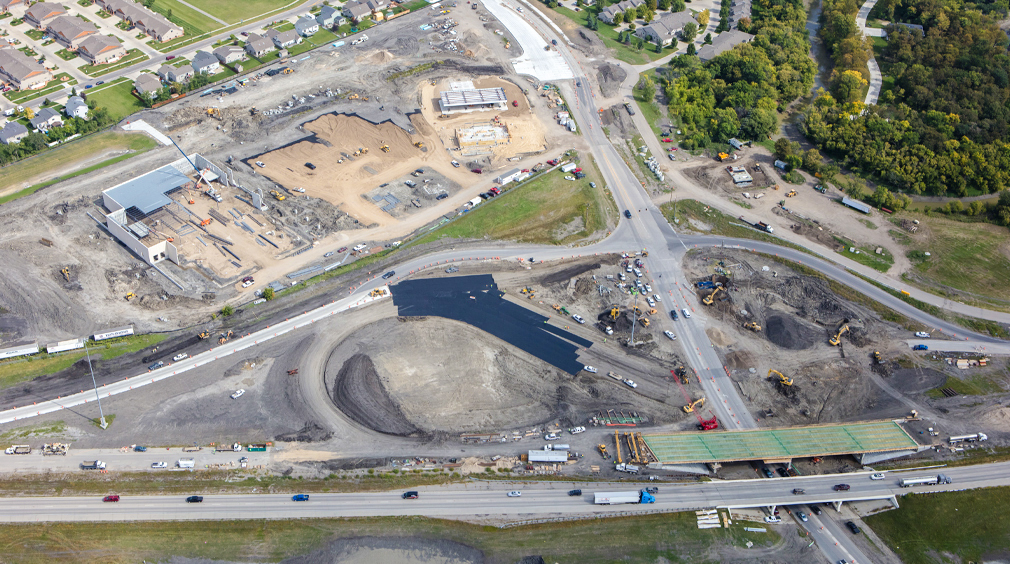
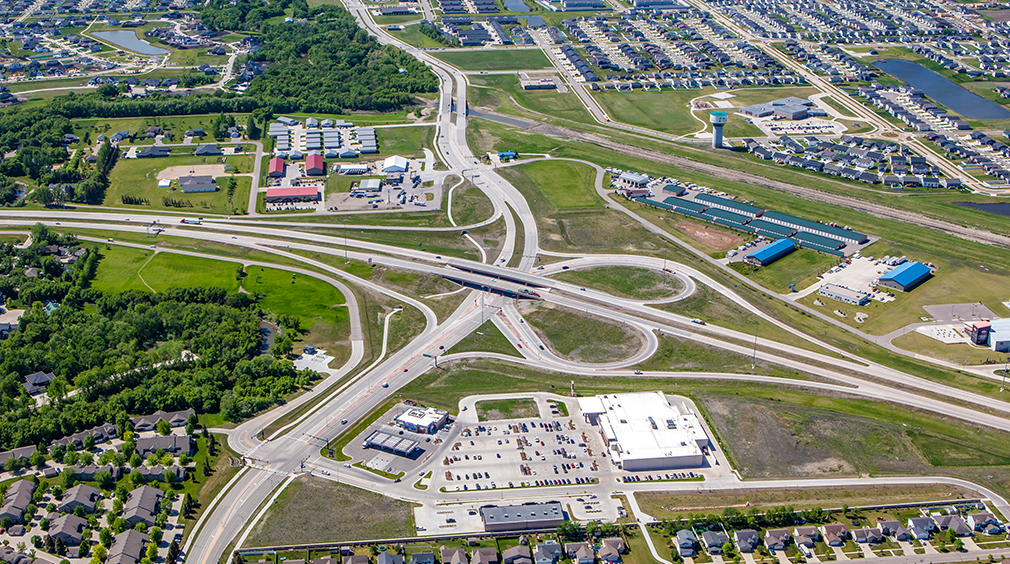
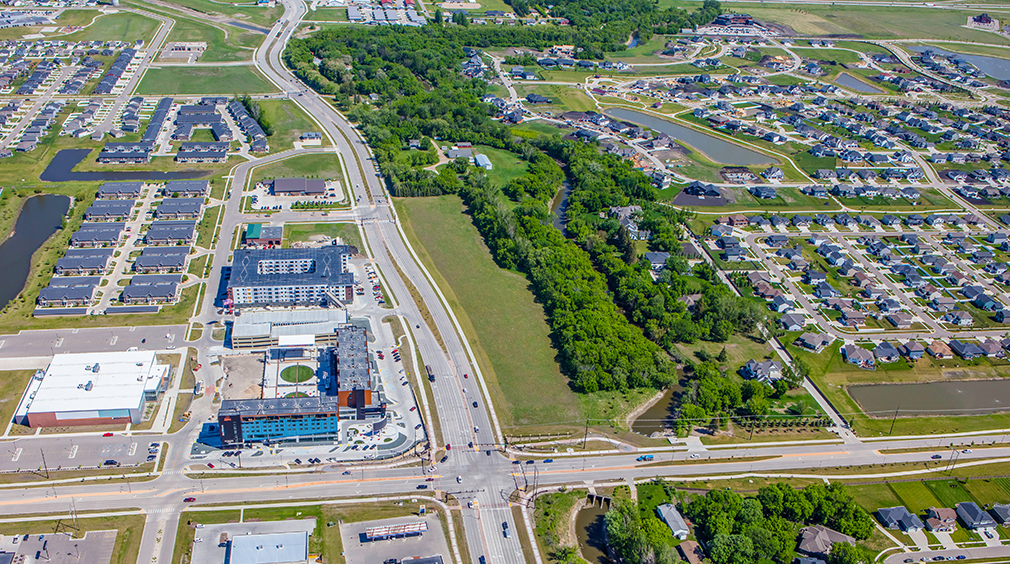
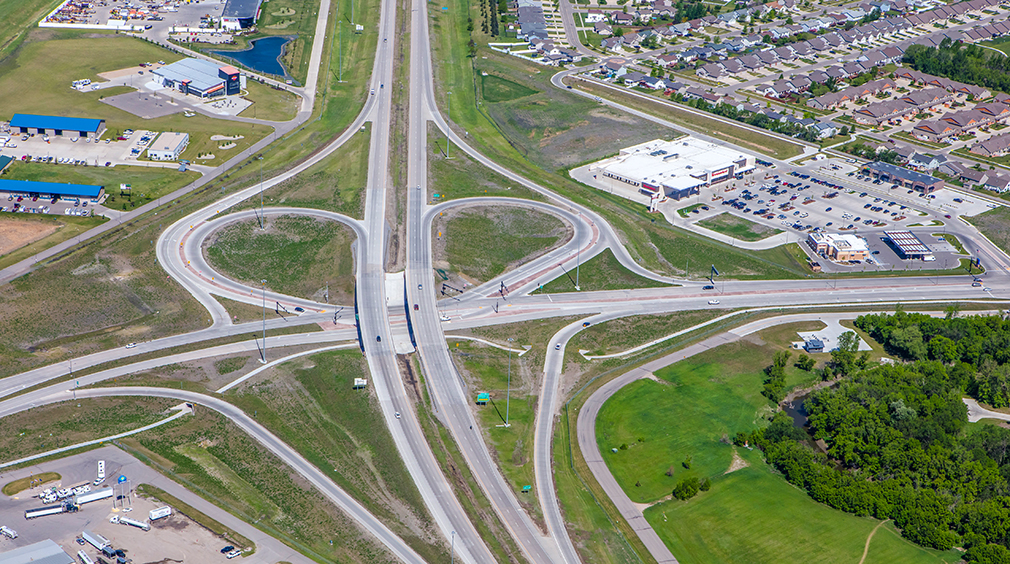
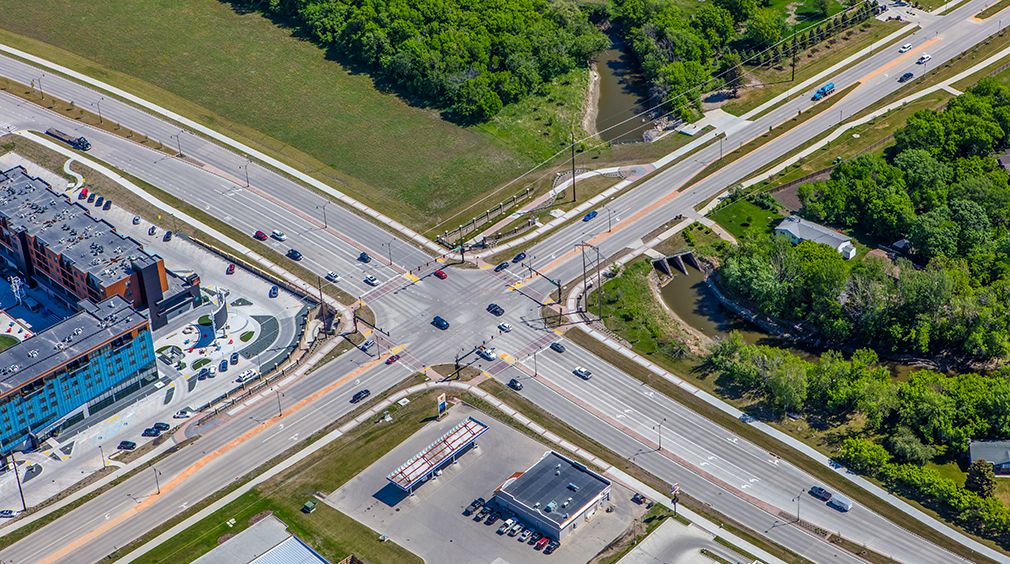

RESULTS
The enhancements to Sheyenne Street increases safety and capacity along the entire north-south length of West Fargo, increases pedestrian connectivity, minimizes backups – especially at the interchange, and significantly reduces delays, and crash potential. The corridor previously did not include dedicated corridors south of Christianson Drive. The shared-use path through the interchange forced pedestrians to cross the interchange ramps at grade. The completed design includes three pedestrian underpasses, additional traffic signals with pedestrian push buttons, pedestrian crossing over the Sheyenne Diversion, and more than 1.5 miles of additional shared-use path.
Since it was fully opened to traffic in the fall of 2019, the Sheyenne Street interchange has eliminated backups onto I-94, relieved congestion on Sheyenne Street, and provided signalized turning protection at additional intersections along the corridor. The increased capacity of Sheyenne Street has relieved some pressure to other arterial roadways such as Veterans Boulevard, 32nd Avenue, and 40th Avenue.
